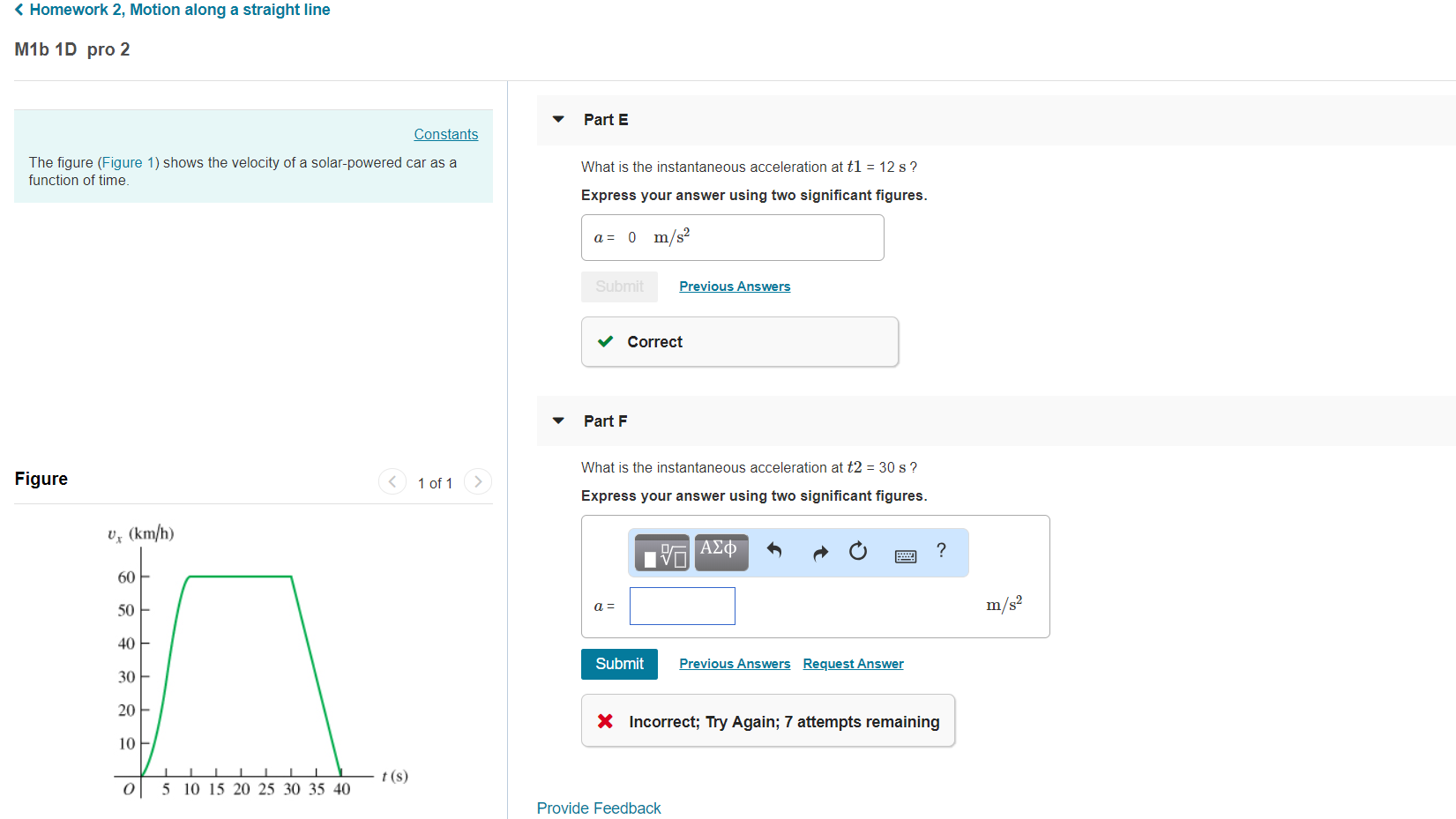Could anyone please help me with part F?

2 Answers
Please see the explanation below.
Explanation:
The velocity is constant at
Therefore,
The acceleration is
The instantaneous acceleration at
Explanation:
According to the figure we have a constant speed until 30 sec, at which point the movement descelerates, so that the speed changes constantly from 60 km/h to 0 km/h in 10 sec. (from 30 to 40 sec.).
Acceleration is speed change per second, i.e.
We, therefore need to convert the speed from
(60 km = 60 000 m, and there are 3600 sec. in 1 hour)
Therefore
The figure shows that the acceleration is constant from 30 to 40 sec. The instantaneous acceleration at

